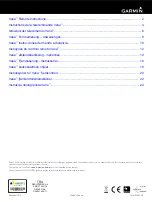
3.2
Scope of delivery
Included in scope of delivery:
■
Distance sensor
■
Protective caps for connections (on the device)
■
Printed Safety Notes, multilingual (brief information and general safety notes)
Accessories
Accessories such as brackets and connecting cables is only delivered if the accessories
have been ordered separately,
3.3
Product characteristics
The displacement measurement sensor uses the triangulation principle for distance
measurement. The triangulation principle makes it possible to measure the distance
between the displacement measurement sensor and an object.
Figure 3: Triangulation principle
1
Receiver
2
Lens
3
Object
4
Laser
A point of light is projected onto the measuring object. The light reflected is captured by
a light-sensitive receiver at a specific angle. Based on the angle between the send and
receive direction, the position of the object is triangulated (lat. Triangulum: triangle).
The distance determined is transmitted via the IO-Link interface. The analog signal out‐
put converts the distance value into an output signal proportional to the distance
(switchable: mA/V).
Digital outputs can be used to monitor when configured switching threshold/distance
values have been reached. The “Distance to the object”, “Window”, and “ObSB” switch‐
ing functions are supported.
Measured distance values can be visualized and parameter settings can be made
using the graphical OLED display. Alternatively, the displacement measurement sensor
can be configured via the IO-Link interface in conjunction with an IO-Link master. The
SOPAS user interface can be used for configuration as well. This process also takes
place via the IO-Link interface in conjunction with an IO-Link master. For additional
information visit:
PRODUCT DESCRIPTION
3
8019642/18JN/2020-07-01 | SICK
O P E R A T I N G I N S T R U C T I O N S | OD1000
13
Subject to change without notice














































